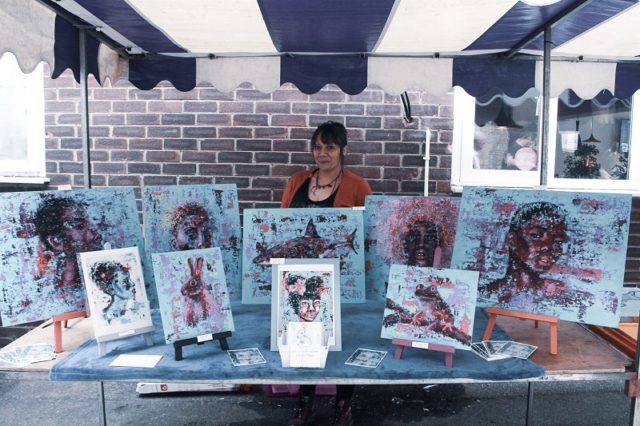October marks Black History Month in the UK. Yet at a time when work by some black artists is more in demand than ever, with the market for black artists growing by nearly 400% between 2008 and 2021, according to Artnet, there still exists a chasm between the work that is in demand and the early-career artists and art workers making and facilitating it. Reports show that black artists, on average, make 35% less than their white counterparts. Equal opportunity, especially in the arts, is essential for keeping the vibrancy of the sector alive. In light of this, IBA – the International Body of Art – which hosts regular exhibitions with the aim of championing ethnic minority artists and helping them secure investment for future projects – addresses the shocking lack of representation in the space and provides a platform for underrepresented artists to contribute to Britain’s established art scene.
This is systemic, with recent reports from the Runnymeade Trust unveiling that within the art sector, only 2.7% of the workforce are from a “Black, Asian or ethnically diverse” background, with the same report finding that in early education, 94% of art teachers are white. This continues into the professional sector as well, with only 2.2% of acquisitions and 6.3% of exhibitions over the past 5 years being from black artists. Given the meteoric growth of the market, the lack of representation in both the workforce and the museum space is a call to action for arts organisations. Calling attention to the shocking lack of representation within the sphere – Maria Artool, founder of IBA – the International Body of Art is available to discuss the need for more representation in the art sector and why it is essential for the future of the market.
CEO of International Body of Art, Maria Artool, comments on the need for inclusivity in the UK art scene:
“Within an often exclusive art world, our mission is to break down the entrenched barriers that exist – which often confine creativity. This means offering up a platform for underrepresented artists to thrive. Change demands more than mere representation; it requires authentic inclusion. Too often, the art world’s embrace of marginalized artists comes in the form of token gestures.
“Our vision is to help create an art community that intertwines and weaves together talent from every corner. True diversity is about connection and collaboration and offering up a platform for everyone to discover their talents, passions and interests within the space. The time has come to redefine the narrative and trade tokenism for true resonance. Collaboration isn’t fashionable, but essential.”




